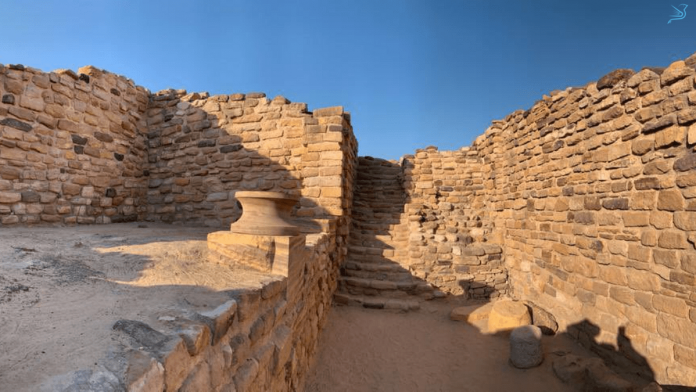Hello Readers!
In today’s blog we will talk about the Harappan city, Dholavira in Gujarat which received UNESCO’s World Heritage Site tag. It became India’s 40th World Heritage Site. We will let you know about the area, its distinct features and other relevant points.
Let us start by knowing about the history and location of the site
Dholavira Site.
- The ancient Harappan city is located in Gujarat’s Rann of Kutch. Archaeologist Jagat Pati Joshi discovered it in 1968. It is the 5th largest metropolis of Indus Valley Civilization (IVC).
- Under the leadership of archaeologist Ravindra Singh Bisht, the site was excavated between 1990 and 2005. It was a commercial and manufacturing center for about 1,500 years before its collapse and eventual devastation around 1500 BC.
- According to UNESCO, Dholavira is one of the most impressive and well-preserved urban communities in South Asia, dating from the third to mid-second millennium BCE (Before Common Era).
- Archaeological discoveries
- Artifacts composed of copper, stone, terracotta, gold, and ivory were discovered during the excavations.
- The site also yielded semi-precious stone, gold, and other ornaments.
- It was also a center for the production of shell jewelry and semi-precious stones such as agate, as well as a port for the export of timber.
Distinct Features
- The site includes a fortified citadel, a middle town, and a lower town with sandstone or limestone walls rather than the mud bricks found at many other Harappan sites.
- Two multi-purpose grounds — one of which was used for festivities and as a marketplace.
- Nine gates with unique designs
- Dholavira is distinguished from other Harappan sites by its multi-layered defensive devices, significant use of stone in construction, and distinctive burial structures.
- Water management, urban planning, art, construction techniques, business, and even social governance and development are all examples of the city’s successes.
Other Harappan sites in Gujarat
Lothal, at Saragwala village on the bank of the Sabarmati in Dholka taluka of Ahmedabad district, was the most notable IVC site in Gujarat before Dholavira was excavated. From a graveyard in Lothal, 21 human skeletons were found.
Apart from Lothal, the earliest Harappa site to be excavated in the state was Rangpur on the banks of the Bhadar River in Surendranagar district. Other Harappan sites in the state include Rojdi in Rajkot district, Prabhas near Veraval in Gir Somnath district, Lakhabaval in Jamnagar, and Deshalpar in Bhuj taluka of Kutch.
Other World Heritage Sites in Gujarat
In addition to Dholariva, there are 3 UNESCO World Heritage Sites:
Historic city of Ahmedabad; Rani ki Vav, Patan; Champaner and Pavagadh
With this we come to the end of this blog. We covered all the major points related to Dholavira site of Gujarat. We also talked about the other Harappan sites discovered before Dholavira.
This is India’s second World Heritage designation in less than a week, following the recognition of Ramappa Temple in Telangana’s Warangal on July 25. To read about it click here – 39th UNESCO World Heritage Site Ramappa Temple.




